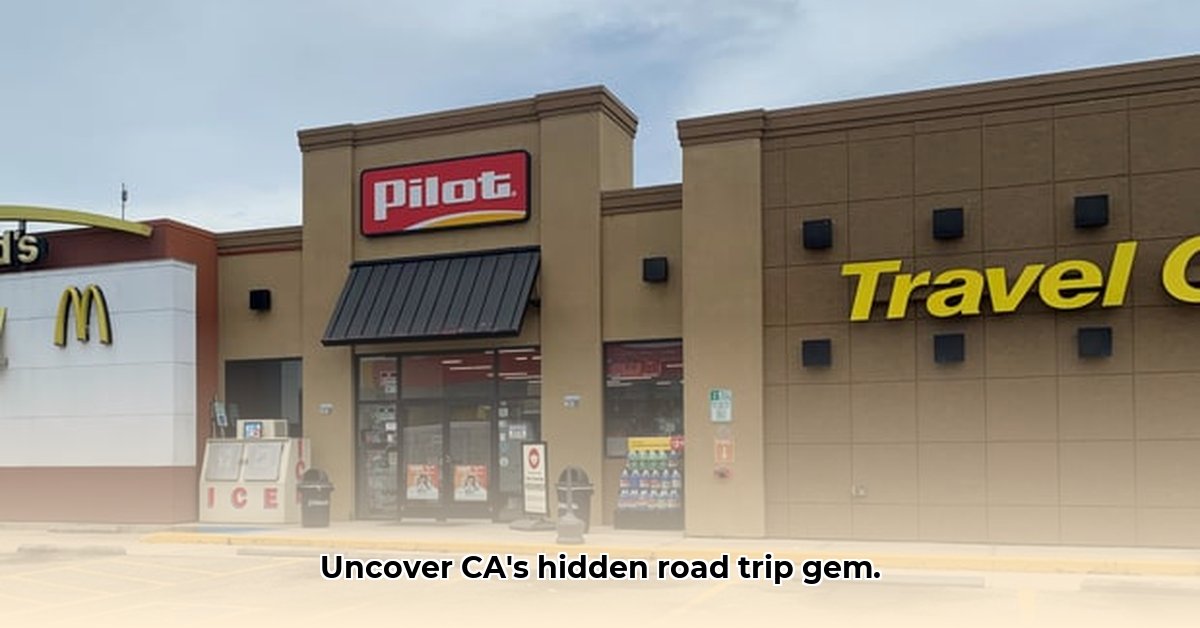
Lost Hills Travel Center: A Case Study of a Rural Truck Stop
Planning a California road trip? Lost Hills Travel Center, situated in the quiet countryside of Lost Hills, offers a compelling case study in the challenges and opportunities facing rural truck stops. This article examines its operations, highlighting its strengths and weaknesses based on available information. While precise quantitative data is limited, we can still glean valuable insights into its potential for growth and profitability. For further examples of successful rural businesses, check out this Roseville case study.
Services Offered at Lost Hills Travel Center
Lost Hills Travel Center provides a range of essential services for truck drivers and travelers alike. These include diesel fuel, fast food, snacks, an ATM, showers, overnight parking, alcohol, and cigarettes. This comprehensive service offering is particularly noteworthy given its rural location, suggesting a strategic effort to cater to a diverse clientele. The question, however, remains: how effectively is this diversity leveraged to maximize profitability?
The Unique Challenges of a Rural Location
Operating a business in a rural environment presents distinct challenges. Compared to truck stops located near major highways, Lost Hills likely experiences lower traffic volume, impacting overall revenue. Furthermore, the transportation costs associated with sourcing supplies are likely higher, impacting profit margins. However, this rural setting also offers potential advantages. The reduced competition may provide an opportunity to cultivate a loyal customer base, who appreciate the convenience and essential services offered. The key is capitalizing upon this niche market and adapting to the unique circumstances.
Strategies for Enhancing Lost Hills Travel Center's Success
Given the limited data available, the strategic recommendations below are based upon general industry best practices and similar business models.
Actionable Steps for Growth and Sustainability
The following numbered steps outline a potential roadmap for improving profitability, categorized by stakeholder focus:
- Enhance Customer Feedback Mechanisms: Implement a simple system for gathering customer feedback (surveys, suggestion box). Analyzing this qualitative data can inform service adjustments and pricing strategies.
- Competitor Price Analysis: Regularly compare fuel and product pricing against those of similar businesses in nearby communities to ensure price competitiveness whilst preserving profit margins.
- Expand Service Offerings: Consider exploring additional services like a small repair shop, expanding food options beyond fast food, or introducing a loyalty program to reward frequent customers. This diversification reduces dependence on fuel sales alone.
- Implement a Digital Marketing Strategy: Develop a website and/or utilize social media to reach a wider customer base beyond the immediate vicinity of Lost Hills. This expands the potential customer pool.
- Invest in Facility Upgrades: Focus on improving amenities such as showers and waiting areas to enhance the overall driver experience and thereby increase customer loyalty.
- Community Engagement: Employ local residents and participate in community events. This strengthens ties with the community and supports local economic development.
- Explore Sustainable Practices: Consider implementing environmentally friendly practices, such as renewable energy sources, to potentially attract environmentally conscious drivers.
- Monitor External Factors: Closely monitor factors such as highway construction projects, national economic trends, and new trucking industry regulations that could significantly impact business.
The Future of Lost Hills Travel Center: Opportunities and Uncertainties
The continued success of Lost Hills Travel Center hinges upon several external factors. Major infrastructure projects (such as new highway construction) could significantly increase customer traffic. Conversely, an economic downturn in the trucking industry might reduce revenue. The ability of Lost Hills management to adapt to these unpredictable variables will ultimately determine long-term sustainability.
This case study underscores the importance of adaptability and strategic planning for even the smallest businesses. The availability of robust data is crucial for detailed analysis; however, even with limited information, effective strategies can be implemented to maximize profitability and foster sustainable growth.